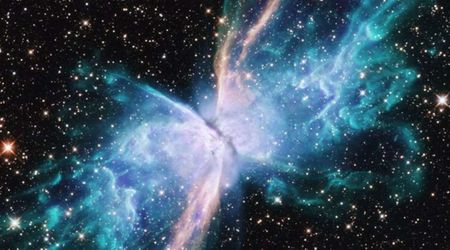Ax-4 mission launch to the ISS delayed after SpaceX detects liquid oxygen leak

The Ax-4 mission, set to send four private astronauts to the International Space Station (ISS), has been postponed again. The launch was originally scheduled for Tuesday (June 10), then was rescheduled for Wednesday (June 11) morning from NASA's Kennedy Space Center in Florida aboard a SpaceX Falcon 9 rocket. But it seems the astronauts have to wait a bit more to embark on their mission, as reported by Space.com.

SpaceX announced on X, Tuesday evening, June 10, that the delay is due to a "LOx (liquid oxygen) leak" that they found during inspections of the booster after a static fire test. For now, the SpaceX team requires more time to fix the leak. A new launch date will be announced once the repairs are complete and the launch range is available. LOx is a crucial propellant for the Falcon 9's Merlin engines, alongside RP-1 (rocket-grade kerosene). SpaceX detected this leak on Sunday, June 8, after a static fire on the rocket's first stage. Static fires are standard pre-launch procedures, where the rocket's engines are briefly ignited while the booster remains secured to the launchpad.
Standing down from tomorrow’s Falcon 9 launch of Ax-4 to the @Space_Station to allow additional time for SpaceX teams to repair the LOx leak identified during post static fire booster inspections. Once complete – and pending Range availability – we will share a new launch date pic.twitter.com/FwRc8k2Bc0
— SpaceX (@SpaceX) June 11, 2025
During a press conference on June 9, Bill Gerstenmaier, vice president of build and flight reliability at SpaceX, elaborated on the issue. He confirmed that this particular Falcon 9 first stage, which has had one previous flight, also experienced this leak during its re-entry to Earth's atmosphere on that prior mission. Gerstenmaier stated that SpaceX "discovered that we had not fully repaired the booster during refurbishment, or we, actually, didn't find the leak and didn't get it corrected." Despite the setback, Gerstenmaier expressed confidence on June 9 that the leak would not prevent an on-time liftoff. He explained, "We're installing a purge that will essentially mitigate the leak if it still continues, if we see it on launch day. So we will be fully ready to go fly."
Leading the Ax-4 mission is Commander Peggy Whitson, Axiom's director of human spaceflight and a former NASA astronaut who holds the record for most days in space by an American, with 675 days. She is joined by pilot Shubhanshu Shukla of India, Polish mission specialist Sławosz Uznański (representing the European Space Agency), and Hungarian mission specialist Tibor Kapu. Moreover, Shukla, Uznański, and Kapu will make history as the first individuals from their respective countries to live on the ISS.
The Ax-4 crew and SpaceX teams completed a full rehearsal of launch day activities ahead of liftoff on Tuesday pic.twitter.com/MEhuTdeuDf
— SpaceX (@SpaceX) June 8, 2025
While this mission marks the inaugural flight for this specific Dragon spacecraft, its first-stage booster is making its second journey, having previously supported a Starlink launch. After stage separation, the Falcon 9's first stage will execute a landing at Landing Zone 1 (LZ-1) at Cape Canaveral Space Force Station in Florida. Once aboard the orbiting laboratory, the Ax-4 crew plans to undertake over 60 scientific experiments and demonstrations, focusing on areas such as human research, Earth observations, and material sciences, per SpaceX.

When the crew eventually launches, a plush swan named "Joy" will accompany them as their zero-gravity indicator. This tradition involves a small, tethered doll floating freely once the spacecraft reaches low Earth orbit, signaling the crew's safe arrival. The Ax-4 crew chose the swan. "Joy" will be aboard the SpaceX Dragon capsule for their journey.
The crew of Axiom-4 have chosen a white baby swan plush toy named "Joy" as the Zero-G indicator for this mission! 🦢
— ISRO Spaceflight (@ISROSpaceflight) June 8, 2025
Swan is the vehicle of the Hindu goddess Saraswati and represents wisdom & purity. 🕉
Mission Pilot Shubhanshu Shukla's 6 y/o son Kiash (aka Sid) also played a… pic.twitter.com/5WFlQQBVoP









